Your cart is currently empty!
Tag: Revolutionizing

Exploring the Power of NVIDIA DRIVE Platform: Revolutionizing Autonomous Driving
Autonomous driving technology has been a hot topic in the automotive industry for several years now, with companies like Tesla, Waymo, and Uber making significant strides in developing self-driving vehicles. One of the key players in this field is NVIDIA, a leading technology company known for its graphics processing units (GPUs) and artificial intelligence (AI) technologies.NVIDIA’s DRIVE platform is a comprehensive solution for autonomous driving, combining hardware and software to enable vehicles to navigate and operate without human intervention. The platform is designed to handle the complex and demanding tasks required for autonomous driving, such as perception, planning, and control.
At the heart of the DRIVE platform is NVIDIA’s powerful GPUs, which are capable of processing massive amounts of data in real-time. These GPUs are used to run deep learning algorithms that enable vehicles to understand their surroundings, recognize objects, and make decisions on the road.
In addition to the GPUs, the DRIVE platform also includes a range of software tools and libraries that developers can use to build and deploy autonomous driving applications. These tools make it easy for developers to create and test algorithms for tasks like object detection, lane keeping, and path planning.
One of the key advantages of the NVIDIA DRIVE platform is its scalability. The platform is designed to support a wide range of vehicles, from small electric cars to large trucks and buses. This flexibility makes it ideal for automakers and transportation companies looking to incorporate autonomous driving technology into their fleets.
Another key feature of the DRIVE platform is its open architecture, which allows developers to customize and optimize the software for their specific needs. This flexibility enables companies to create unique and innovative solutions for autonomous driving, giving them a competitive edge in the rapidly evolving automotive industry.
Overall, NVIDIA’s DRIVE platform is revolutionizing autonomous driving by providing a powerful and flexible solution for building self-driving vehicles. With its advanced GPUs, software tools, and open architecture, the platform is enabling companies to accelerate the development and deployment of autonomous driving technology, bringing us closer to a future where cars can drive themselves safely and efficiently.
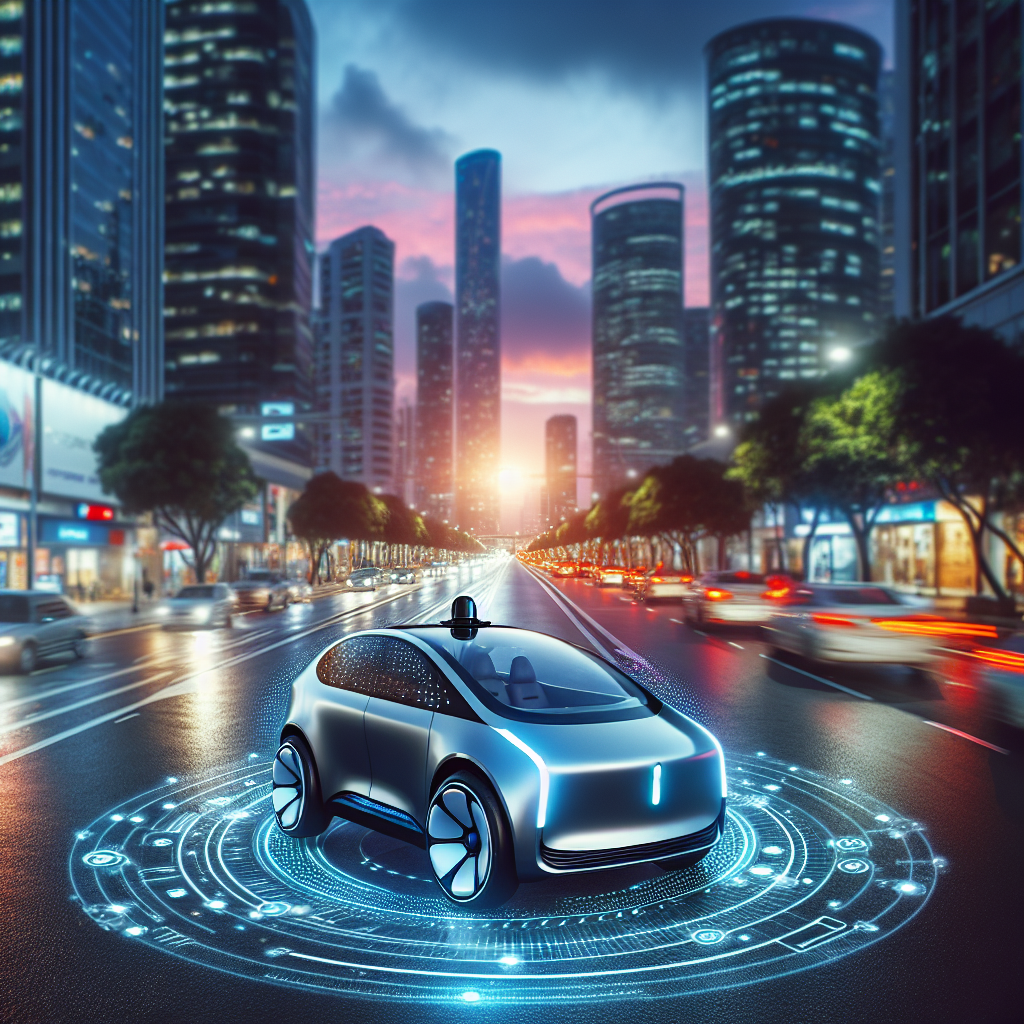
Revolutionizing Transportation: NVIDIA’s Advancements in Self-Driving Cars
Transportation is an essential aspect of our daily lives, with millions of people relying on cars, buses, and trains to get from point A to point B. However, the traditional modes of transportation are beginning to undergo a revolutionary transformation, thanks to advancements in technology, particularly in the field of self-driving cars.One of the leading companies at the forefront of this technological revolution is NVIDIA, a California-based technology company known for its groundbreaking innovations in artificial intelligence and computer graphics. NVIDIA’s advancements in self-driving cars have the potential to revolutionize the way we travel, making transportation safer, more efficient, and more convenient than ever before.
NVIDIA’s self-driving car technology, known as NVIDIA Drive, is a comprehensive platform that combines AI, deep learning, and computer vision to enable autonomous vehicles to navigate the roads with precision and accuracy. The platform includes powerful software and hardware components that work together to process data from sensors, cameras, and other sources in real-time, allowing the vehicle to make split-second decisions and respond to changing road conditions.
One of the key features of NVIDIA Drive is its deep learning capabilities, which enable the vehicle to learn from its surroundings and improve its driving skills over time. This technology allows self-driving cars to adapt to new environments, navigate complex traffic situations, and avoid potential hazards with ease.
In addition to its advanced AI capabilities, NVIDIA Drive also includes state-of-the-art hardware components, such as NVIDIA’s powerful GPUs, which provide the processing power needed to analyze vast amounts of data and make decisions quickly. This hardware-software integration ensures that self-driving cars can operate efficiently and safely on the road, even in challenging conditions.
NVIDIA’s advancements in self-driving cars have the potential to revolutionize the transportation industry in several ways. Firstly, self-driving cars have the potential to significantly reduce traffic accidents and fatalities, as they are not prone to human errors such as distracted driving or impaired judgment. This could lead to a significant decrease in road accidents and make transportation safer for everyone.
Secondly, self-driving cars have the potential to make transportation more efficient and convenient for users. With autonomous vehicles, people can sit back and relax during their commute, instead of dealing with the stress of driving in traffic. This could lead to reduced travel times, lower fuel consumption, and a more pleasant overall travel experience.
Finally, self-driving cars have the potential to revolutionize urban planning and infrastructure development. With autonomous vehicles on the road, cities can redesign their transportation systems to be more efficient and sustainable, with fewer cars on the road and more efficient use of space. This could lead to cleaner air, less congestion, and a more livable urban environment for everyone.
Overall, NVIDIA’s advancements in self-driving cars have the potential to revolutionize transportation as we know it, making travel safer, more efficient, and more convenient for everyone. As self-driving cars become more widespread and mainstream, we can expect to see significant changes in the way we move from place to place, with technology leading the way towards a more connected and sustainable future.
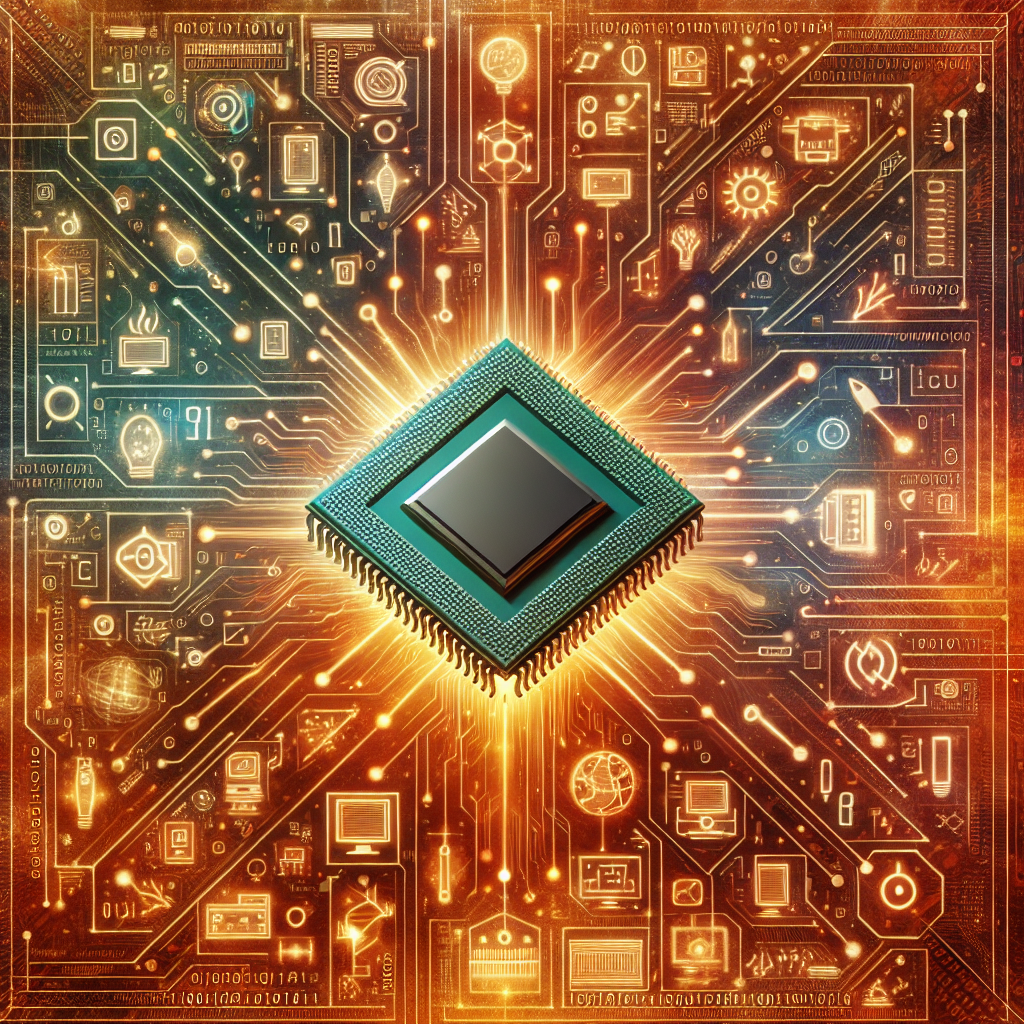
How Non-volatile Memory is Revolutionizing the Internet of Things
The Internet of Things (IoT) has become an integral part of our daily lives, with countless devices connected to the internet to provide convenience and efficiency. From smart thermostats to wearable fitness trackers, IoT devices have transformed the way we live and work. However, as the number of connected devices continues to grow exponentially, the need for reliable and efficient storage solutions has become more crucial than ever.One of the key technologies that is revolutionizing the IoT landscape is non-volatile memory. Non-volatile memory, also known as NVM, is a type of computer memory that retains stored data even when the power is turned off. This means that data stored in NVM devices remains intact even in the event of a power outage or system failure.
The use of non-volatile memory in IoT devices has several advantages. First and foremost, NVM offers faster read and write speeds compared to traditional storage solutions, such as hard disk drives or solid-state drives. This allows IoT devices to process data more quickly and efficiently, leading to improved performance and responsiveness.
Additionally, NVM devices are more durable and reliable than traditional storage solutions. Because NVM does not rely on moving parts, it is less prone to mechanical failure and can withstand harsh environmental conditions. This makes NVM ideal for use in IoT devices that are deployed in remote or rugged environments.
Furthermore, NVM devices are more energy-efficient, consuming less power than traditional storage solutions. This is particularly important for IoT devices that are powered by batteries or other limited power sources. By using NVM, IoT devices can operate for longer periods of time without needing to be recharged or replaced.
The adoption of non-volatile memory in IoT devices is also driving innovation in the development of new applications and services. With faster and more reliable storage solutions, IoT devices can collect and analyze data in real-time, enabling new capabilities such as predictive maintenance, remote monitoring, and automated decision-making.
Overall, non-volatile memory is playing a crucial role in revolutionizing the Internet of Things. By providing faster, more reliable, and energy-efficient storage solutions, NVM is enabling the next generation of IoT devices and services. As the IoT continues to evolve and expand, non-volatile memory will undoubtedly play a key role in shaping the future of connected technology.
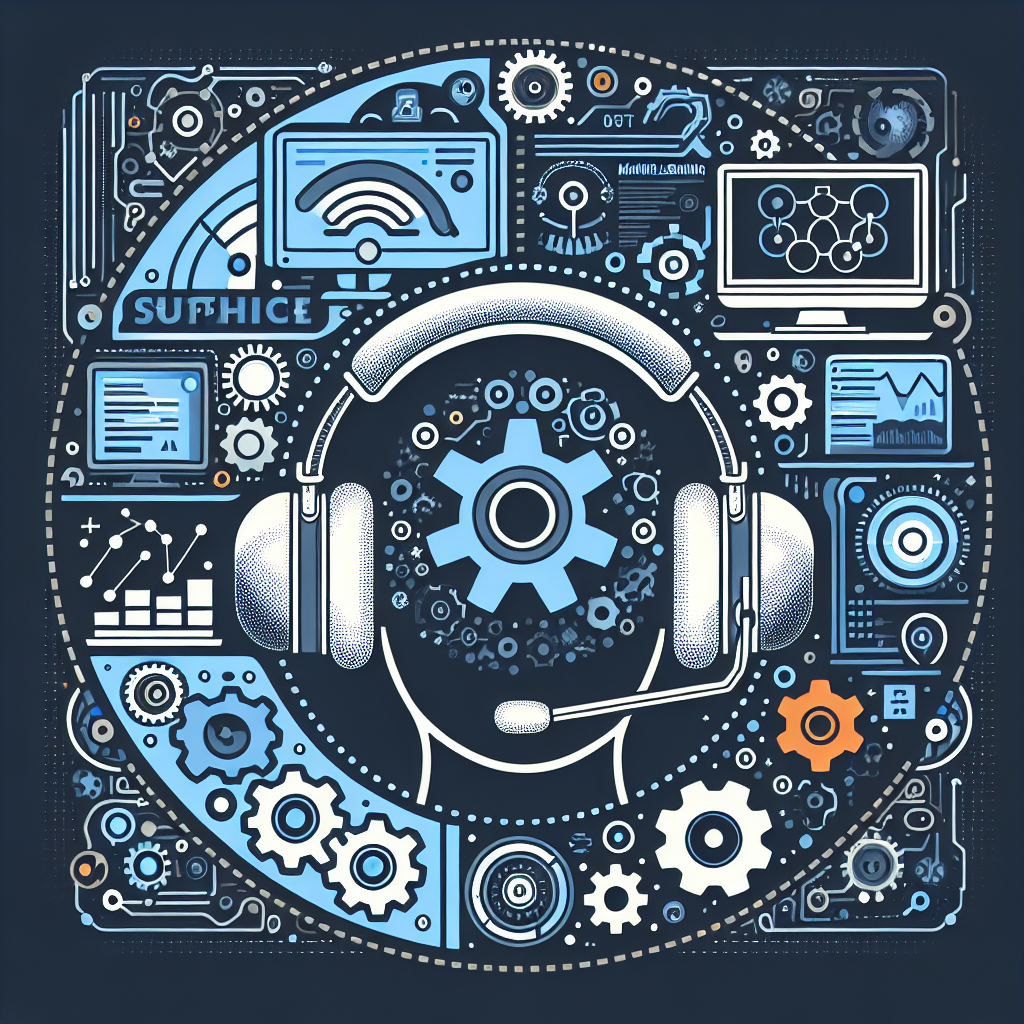
The Role of Artificial Intelligence in Revolutionizing Technical Support
Technical support is an essential aspect of any business that relies on technology to function efficiently. Whether it’s troubleshooting software issues, setting up hardware, or providing guidance on how to use a particular product, technical support teams play a crucial role in ensuring that customers have a positive experience with their technology.In recent years, artificial intelligence (AI) has been revolutionizing the way technical support is provided. AI technologies, such as machine learning algorithms and natural language processing, have the ability to analyze vast amounts of data and learn from it to improve the support process.
One of the key ways AI is revolutionizing technical support is through chatbots. Chatbots are AI-powered virtual assistants that can interact with customers in real-time, providing answers to common questions and guiding users through troubleshooting steps. By leveraging natural language processing, chatbots can understand and respond to customer queries in a conversational manner, making the support process more efficient and user-friendly.
Another way AI is transforming technical support is through predictive analytics. By analyzing historical data and patterns, AI algorithms can predict potential issues before they occur and proactively address them. This proactive approach can help minimize downtime and prevent technical issues from escalating, ultimately improving customer satisfaction.
AI-powered recommendation engines are also playing a role in revolutionizing technical support. By analyzing customer behavior and preferences, recommendation engines can suggest relevant solutions or products to users, helping them make informed decisions and improve their overall experience.
Overall, the role of AI in revolutionizing technical support cannot be understated. By automating repetitive tasks, providing real-time assistance, and leveraging data analytics, AI technologies are helping businesses streamline their support processes, improve customer satisfaction, and ultimately drive business growth. As AI continues to advance, we can expect to see even more innovative applications in technical support, further enhancing the customer experience.
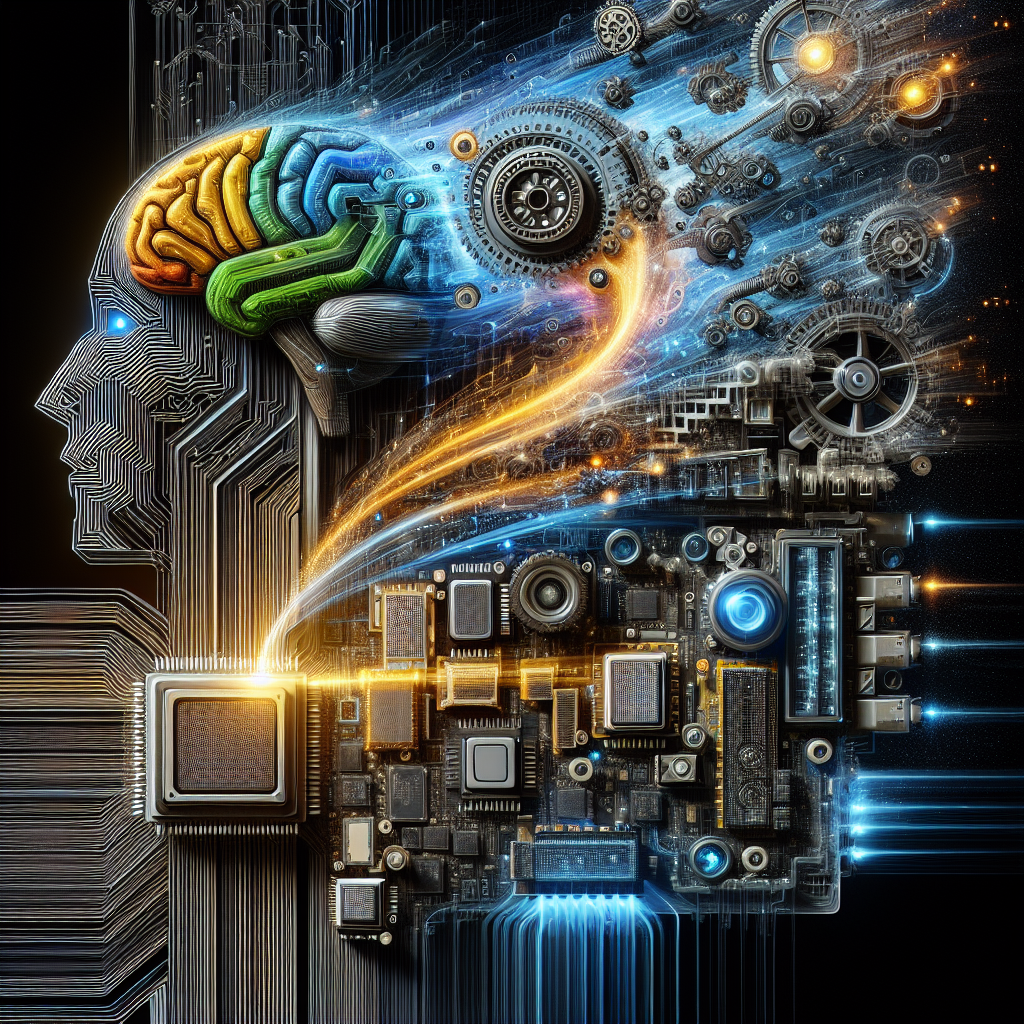
How NVIDIA is Revolutionizing Machine Learning with Cutting-Edge Technology
NVIDIA is a company that has been at the forefront of revolutionizing machine learning with its cutting-edge technology. Their advancements in the field have not only pushed the boundaries of what is possible with artificial intelligence, but have also transformed industries across the globe.One of the key ways in which NVIDIA has revolutionized machine learning is through its development of powerful graphics processing units (GPUs). These GPUs are specifically designed to handle the complex mathematical calculations that are required for machine learning algorithms to function effectively. By harnessing the parallel processing power of GPUs, NVIDIA has been able to greatly accelerate the training and inference processes of machine learning models.
In addition to their high-performance GPUs, NVIDIA has also developed specialized software tools and frameworks that make it easier for developers to build and deploy machine learning applications. One of their most popular tools is CUDA, a parallel computing platform and programming model that allows developers to write code that can be executed on NVIDIA GPUs. This has greatly simplified the process of leveraging GPU acceleration for machine learning tasks.
NVIDIA has also invested heavily in research and development to stay ahead of the curve in machine learning technology. They have made significant advancements in areas such as deep learning, reinforcement learning, and natural language processing, which have enabled breakthroughs in fields such as healthcare, autonomous vehicles, and finance.
One of the most notable examples of NVIDIA’s impact on machine learning is their collaboration with leading researchers and institutions to develop state-of-the-art models such as GPT-3, the largest language model ever created. This model, which was trained on NVIDIA GPUs, has demonstrated remarkable abilities in tasks such as text generation, translation, and question answering.
Overall, NVIDIA’s cutting-edge technology has played a crucial role in driving the rapid advancement of machine learning. By providing powerful hardware, software tools, and research expertise, they have empowered developers and researchers to push the boundaries of what is possible with artificial intelligence. As machine learning continues to revolutionize industries and society as a whole, NVIDIA will undoubtedly remain a key player in shaping the future of this transformative technology.
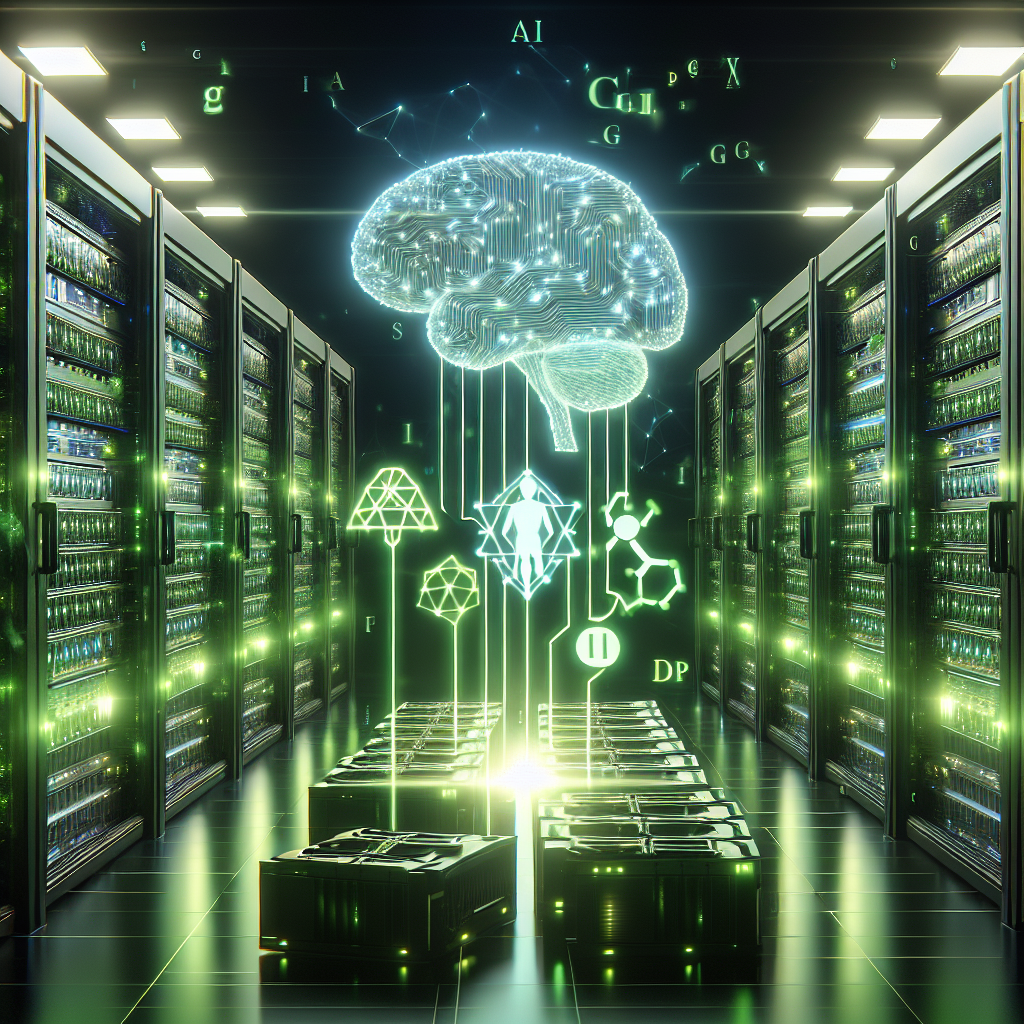
How NVIDIA is Revolutionizing Artificial Intelligence with GPUs
NVIDIA has been at the forefront of revolutionizing artificial intelligence (AI) with its powerful graphics processing units (GPUs). These GPUs have played a crucial role in accelerating AI applications and enabling breakthroughs in deep learning, computer vision, natural language processing, and more.One of the key reasons why NVIDIA GPUs are so well-suited for AI workloads is their parallel processing capabilities. Traditional CPUs are optimized for sequential processing, which is not ideal for the highly parallel nature of AI algorithms. On the other hand, GPUs are designed to handle thousands of parallel computations simultaneously, making them much more efficient for AI tasks.
NVIDIA’s CUDA programming platform has also been instrumental in driving the adoption of GPUs for AI. CUDA allows developers to harness the power of NVIDIA GPUs for general-purpose computing, enabling them to write parallel code that can run on the GPU. This has made it much easier for developers to take advantage of the massive parallel processing power of GPUs for AI applications.
In addition to hardware and software, NVIDIA has also been a leader in developing AI-specific technologies such as Tensor Cores. These specialized processing units are optimized for matrix operations commonly used in deep learning algorithms, making them much faster and more efficient than traditional GPU cores.
One of the most notable applications of NVIDIA GPUs in AI is in the field of autonomous driving. Companies like Tesla, Waymo, and Uber have all relied on NVIDIA’s GPUs to power their self-driving car systems, enabling them to process large amounts of sensor data in real-time and make split-second decisions to navigate safely on the road.
NVIDIA’s GPUs have also been used in healthcare, finance, and other industries to accelerate AI research and development. From drug discovery to fraud detection, the speed and efficiency of NVIDIA’s GPUs have enabled researchers and developers to tackle complex problems and drive innovation in their respective fields.
Overall, NVIDIA’s GPUs have been a game-changer in the world of artificial intelligence, enabling researchers, developers, and companies to push the boundaries of what is possible with AI. With their unparalleled parallel processing capabilities, specialized AI technologies, and robust ecosystem of tools and frameworks, NVIDIA is poised to continue leading the charge in revolutionizing AI for years to come.
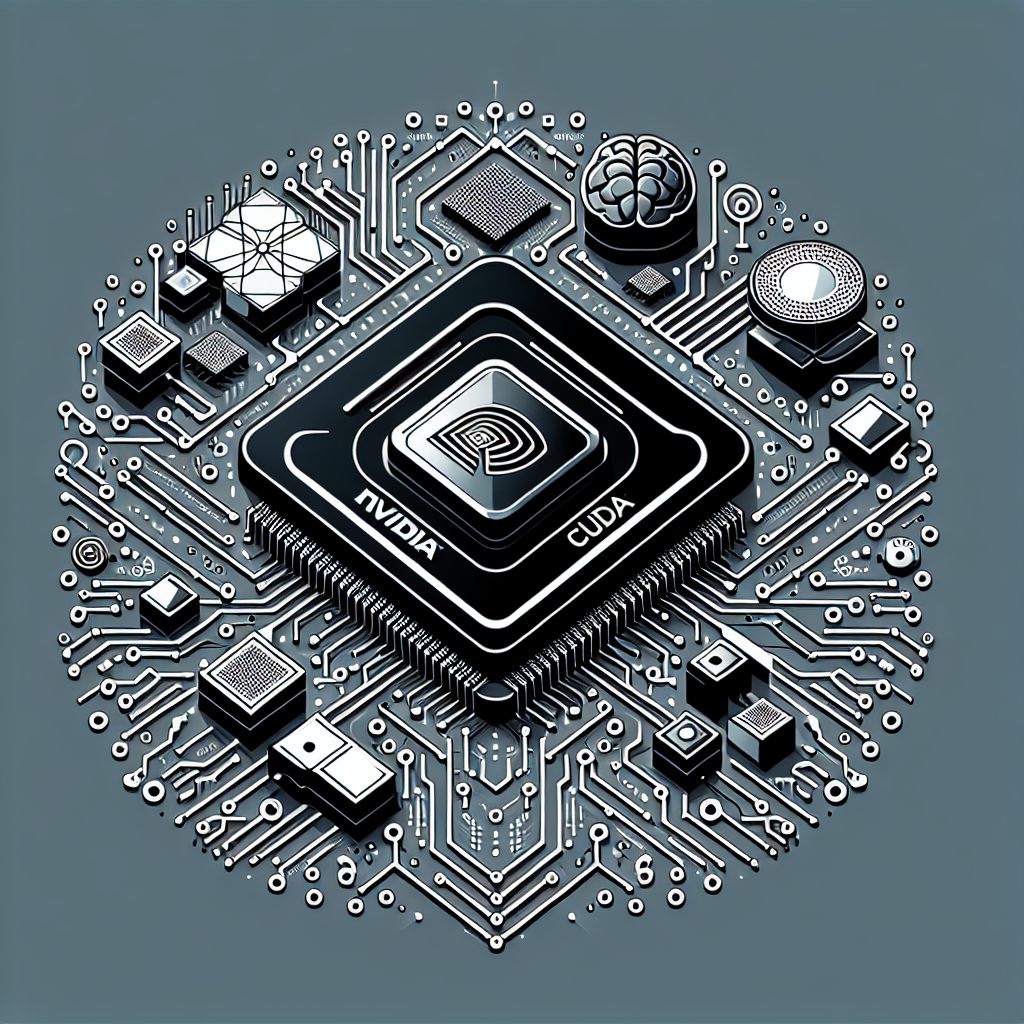
How NVIDIA CUDA is Revolutionizing Deep Learning and AI
NVIDIA CUDA is a powerful parallel computing platform and application programming interface (API) that is revolutionizing the fields of deep learning and artificial intelligence (AI). By leveraging the processing power of NVIDIA GPUs, CUDA enables researchers and developers to train complex neural networks and run sophisticated algorithms with unprecedented speed and efficiency.Deep learning algorithms, which are at the core of many AI applications, require massive amounts of computational power to train and optimize. Traditional CPUs are not well-suited for these tasks, as they lack the parallel processing capabilities needed to handle the complex matrix operations and calculations involved in training neural networks. NVIDIA GPUs, on the other hand, are built with thousands of processing cores that can perform these operations in parallel, making them ideal for deep learning applications.
CUDA allows developers to harness the power of NVIDIA GPUs for deep learning and AI tasks by providing a programming interface that enables them to write code that can be executed in parallel on the GPU. This allows for significantly faster training times and improved performance compared to running the same code on a CPU.
One of the key advantages of using CUDA for deep learning and AI is its ability to scale to handle large datasets and complex models. With CUDA, developers can easily distribute computations across multiple GPUs, allowing them to train larger models and process more data in a fraction of the time it would take on a CPU.
In addition to speeding up training times, CUDA also enables developers to deploy trained models on GPUs for real-time inference and prediction. This is crucial for applications such as autonomous vehicles, natural language processing, and computer vision, where low latency and high throughput are essential.
Overall, NVIDIA CUDA is revolutionizing the field of deep learning and AI by providing developers with the tools they need to build and deploy advanced neural networks and algorithms with unprecedented speed and efficiency. As the demand for AI applications continues to grow, CUDA will play an increasingly important role in enabling researchers and developers to push the boundaries of what is possible in the field of artificial intelligence.
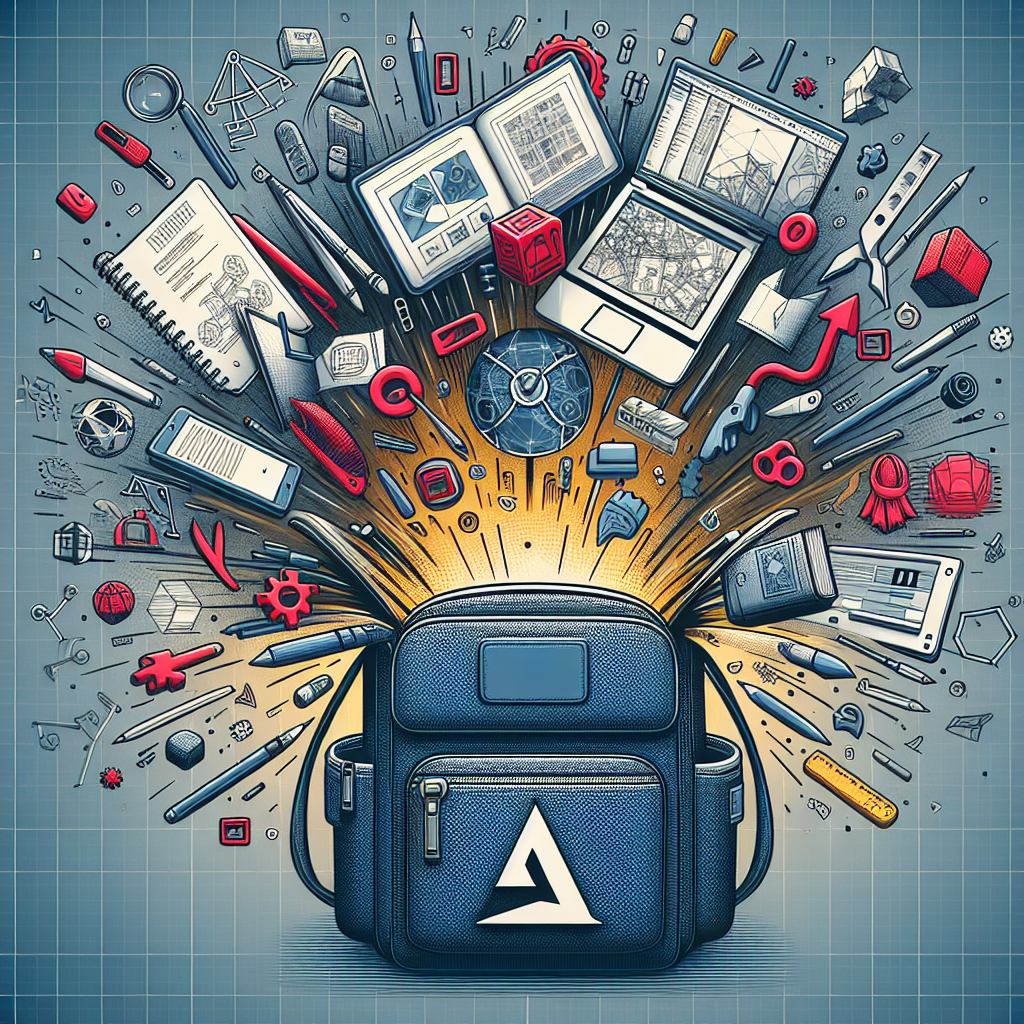
How Autodesk Backpack is Revolutionizing Collaboration in the Workplace
In today’s fast-paced and globalized business world, collaboration is key to success. Teams often work across different time zones and locations, making it challenging to communicate and collaborate effectively. However, with the help of technology, collaboration in the workplace has been revolutionized, and one tool that is leading the way is Autodesk Backpack.Autodesk Backpack is a cloud-based platform that allows teams to collaborate on projects in real-time. It offers a range of features that make collaboration easier and more efficient, such as file sharing, project management, and communication tools. With Autodesk Backpack, team members can easily share files, track project progress, and communicate with each other, no matter where they are located.
One of the key benefits of Autodesk Backpack is its ability to streamline the collaboration process. Team members can access and edit files in real-time, eliminating the need for back-and-forth emails and version control issues. This not only saves time but also reduces the risk of errors and miscommunications.
Another advantage of Autodesk Backpack is its project management capabilities. Team members can create tasks, set deadlines, and track progress all in one place. This makes it easier for teams to stay organized and on track, ensuring that projects are completed on time and within budget.
In addition to file sharing and project management features, Autodesk Backpack also offers communication tools such as chat and video conferencing. This allows team members to collaborate effectively, even if they are not in the same location. With these tools, teams can easily discuss project details, brainstorm ideas, and make decisions together in real-time.
Overall, Autodesk Backpack is revolutionizing collaboration in the workplace by providing teams with a centralized platform to work together efficiently and effectively. With its range of features and ease of use, teams can collaborate seamlessly, regardless of their location. As businesses continue to embrace remote work and global teams, tools like Autodesk Backpack will become essential for successful collaboration in the workplace.
#Autodesk #Backpack #Revolutionizing #Collaboration #Workplace,autodesk backpack
How Cisco Networking Solutions are Revolutionizing the Digital Age
In today’s fast-paced digital age, networking solutions play a crucial role in connecting people, devices, and data. Cisco, a global leader in networking technology, is at the forefront of revolutionizing the digital landscape with its innovative networking solutions.Cisco’s networking solutions are designed to provide organizations with the infrastructure and tools they need to thrive in the digital era. From small businesses to large enterprises, Cisco offers a wide range of networking products and services that cater to the diverse needs of its customers.
One of the key ways in which Cisco is revolutionizing the digital age is through its focus on cloud-based networking solutions. With the rise of cloud computing, organizations are increasingly looking to move their infrastructure to the cloud to improve scalability, flexibility, and cost-effectiveness. Cisco’s cloud-based networking solutions, such as Cisco Meraki, provide organizations with a centralized platform for managing their network infrastructure, making it easier to deploy, monitor, and secure their networks.
Cisco is also leading the way in the development of software-defined networking (SDN) solutions. SDN technology allows organizations to centrally manage and configure their network infrastructure through software, rather than relying on traditional hardware-based networking solutions. This provides organizations with greater flexibility and agility in managing their networks, making it easier to adapt to changing business requirements and technology trends.
In addition to cloud-based and SDN solutions, Cisco is also driving innovation in the area of cybersecurity. As digital threats continue to evolve and become more sophisticated, organizations are facing increasing challenges in securing their networks and data. Cisco’s networking solutions incorporate advanced security features, such as next-generation firewalls, intrusion detection systems, and threat intelligence, to help organizations defend against cyber threats and protect their valuable assets.
Overall, Cisco’s networking solutions are revolutionizing the digital age by providing organizations with the tools and technologies they need to navigate the complex and rapidly changing digital landscape. Whether it’s enabling cloud-based networking, empowering software-defined networking, or strengthening cybersecurity defenses, Cisco is helping organizations stay ahead of the curve and achieve their digital transformation goals. With Cisco’s innovative networking solutions, businesses can connect, collaborate, and thrive in the digital age like never before.
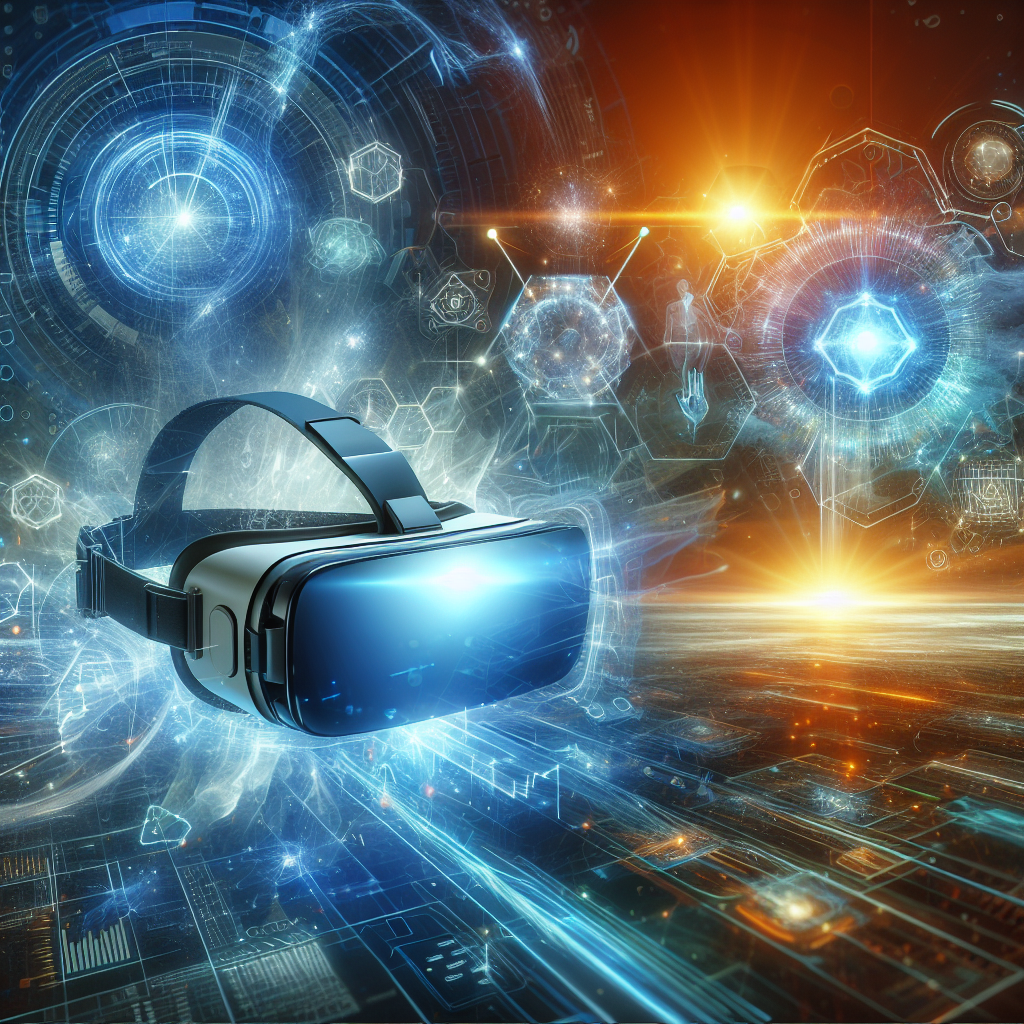
How NVIDIA is Revolutionizing Virtual Reality Experiences
Virtual reality (VR) has been a hot topic in the tech world for several years now, but it’s only recently that the technology has truly begun to revolutionize the way we experience and interact with digital content. One company that has been at the forefront of this revolution is NVIDIA, a leading developer of graphics processing units (GPUs) and other hardware solutions.NVIDIA has been heavily involved in the development of VR technology, with a particular focus on creating GPUs that can deliver the high levels of performance and image quality required for a truly immersive VR experience. One of the key challenges in VR is maintaining a high frame rate and low latency to prevent motion sickness and ensure a smooth, realistic experience. NVIDIA’s GPUs, such as the GeForce RTX series, are specifically designed to meet these requirements, offering high levels of performance and efficiency to deliver stunning visuals and smooth gameplay in VR environments.
But NVIDIA’s contributions to VR go beyond just hardware. The company has also been actively involved in the development of software and tools to help developers create more immersive and interactive VR experiences. One example of this is NVIDIA VRWorks, a suite of APIs and tools that enable developers to create realistic physics, audio, and visual effects in VR applications. These tools help developers to take full advantage of NVIDIA’s hardware capabilities, resulting in more realistic and immersive VR experiences for users.
One of the most exciting developments in NVIDIA’s VR technology is the introduction of real-time ray tracing, a rendering technique that simulates the way light interacts with objects in a scene to create more realistic lighting and reflections. Ray tracing has long been considered the holy grail of computer graphics, but until recently it was too computationally intensive to be used in real-time applications like VR. NVIDIA’s RTX GPUs have changed that, making real-time ray tracing a reality in VR applications and enabling developers to create even more visually stunning and immersive experiences for users.
Overall, NVIDIA’s contributions to the field of VR have been instrumental in pushing the technology forward and making it more accessible and immersive for users. By developing powerful GPUs, software tools, and rendering techniques, NVIDIA has helped to create a new era of VR experiences that are more realistic, interactive, and engaging than ever before. As VR continues to evolve and become more mainstream, NVIDIA is sure to remain a key player in shaping the future of this exciting technology.
